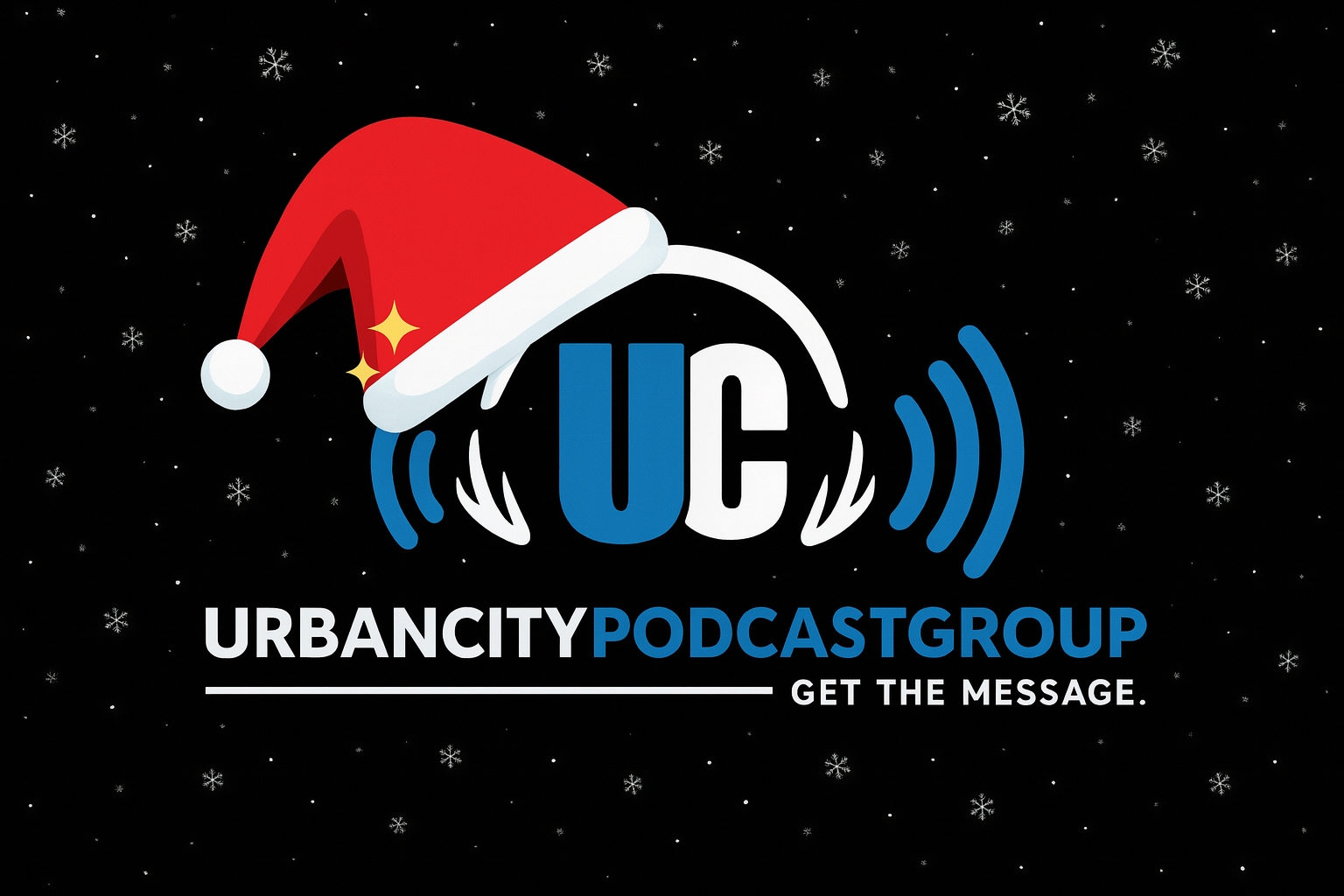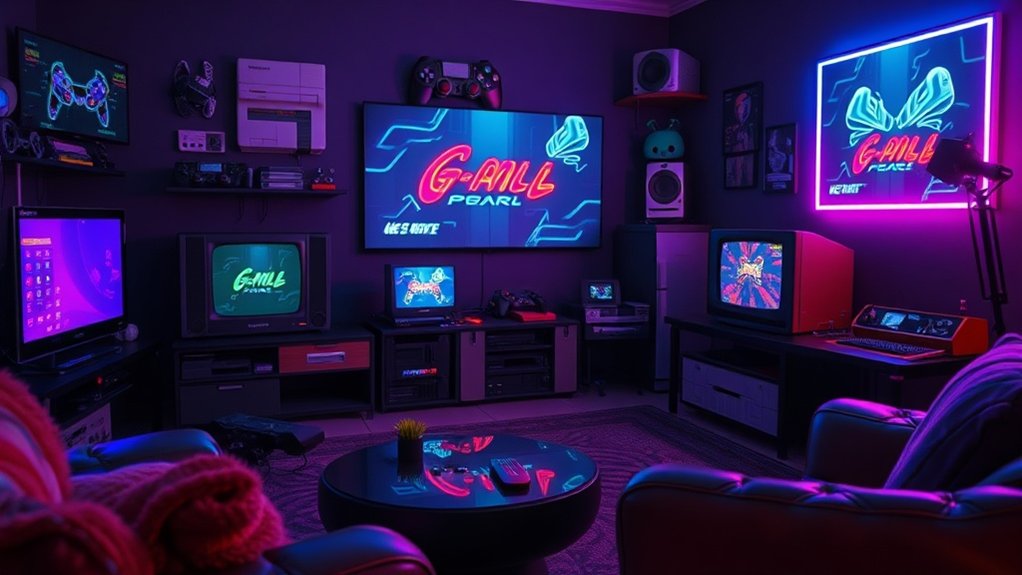Major Takeaways:
Immersive reality programs are being used to provide spiritual and emotional healing for cancer patients, complementing medical treatment.
Researchers discovered glioblastoma tumors use glucose to create serine, fueling rapid cancer growth.
Blocking or restricting serine may be a potential strategy to slow tumor progression and extend patient survival.
Immersive Healing and Cancer Research: How Virtual Reality and Glucose Discoveries Are Transforming Patient Care
You’re listening to Radio Health Journal, the trusted news source for medicine, science and technology. I’m Elizabeth Westfield. I’m Mayan Vastabetancourt.
And I’m Greg Johnson. This week, a new discovery that could increase life expectancy for cancer patients. So your brain may use glucose to make neurotransmitters, but we don’t know what the cancer cell is using it for.
So if we know what that cancer cell is using that glucose for, then we can attack that pathway. We can block that pathway. But first, how immersive reality is providing cancer patients more than just physical healing? There’s a quote that we kind of like to incorporate into our ethos that there’s no profit in healing the body if in the process you destroy the soul.
All that and more this week on Radio Health Journal. Do Crohn’s disease or ulcerative colitis symptoms keep coming back? Tremphaya gazelkomab may help, with rapid remission achieved at 12 weeks and lasting clinical remission at one year. Some even saw visible improvement of their intestinal lining at 12 weeks and one year.
Tremphaya is a prescription medicine used to treat adults with moderately to severely active Crohn’s disease and adults with moderately to severely active ulcerative colitis. Serious allergic reactions and increased risk of infections and liver problems may occur. Before treatment, your doctor should check you for infections and tuberculosis.
Tell your doctor if you have an infection, flu-like symptoms, or if you need a vaccine. Healing is possible with Tremphaya. Approximately 3 out of 10 patients were in endoscopic remission at one year, based on areas visualized on colonoscopy, which may not represent the deeper bowel layer or entire GI tract.
Individual results may vary. Ask your doctor about Tremphaya today. Call 1-800-526-7736 to learn more or visit Tremphayaradio.com. Cancer entered Roger Holzberg’s vocabulary at a young age.
His cousin grew up just down the street, and the two were inseparable, until an aggressive form of pediatric kidney cancer stopped the duo in their tracks. At age 14, Holzberg watched his best friend fight for eight months until he had nothing left to give. About a decade after that, my parents were divorced, my mom was terminal with breast cancer, and as the oldest kid, I had to make her end-of-life decisions at a time when no one should have to make those decisions.
My dad, who was a physician at that point, said, so now you’re going to go into med school and help fix this cancer problem, right? To which I said, I’m going to be as far away from med school as I possibly can be. I’m going to art school. Holzberg dove headfirst into his passion, and landed with a position as a creative director and vice president at Walt Disney Imagineering.
Just when he thought he had the rest of his life figured out, the enemy Holzberg had worked so hard to distance himself from barged right back into his life. Despite his strict diet and exercise regimen, Holzberg had begun gaining weight and feeling more lethargic. I called my physician the next day.
On the eve of my 50th birthday, I heard those three words that one in two American men and one in three American women hear in their lifetime. You have cancer. The good news is it was an early diagnosis, stage one, completely still encapsulated.
And I knew very little about health care at that point. My dad came back into my life and said, so your prognosis looks really good. You ought to do some volunteering.
Holzberg pulled together a group of his Imagineer co-workers, and as he successfully fought his own thyroid cancer, the team adapted some favorite Disney attractions for Children’s Hospital of Orange County. Which included adapting one of our attractions called Turtle Talk with Crush to Children’s Hospital of Orange County. And suddenly I met child life specialists and I saw immersive distraction therapy work and I got to help Crush the Turtle be more than just a goofball surfer dude, to be a comfort friend.
I’d say that was the first time the light bulb went off, which was realized in the project we’d just opened, where I went, why didn’t I have stuff like this when I was in adult treatment? Holzberg had spent his time in treatment either staring at a blank wall or watching the news from a TV in the corner of the room. I remember sitting in a chair in a hospital going, my healing place is the ocean. If I could be in Malibu, if I could be out the water and there was a dolphin near me, I’m an ocean swimmer, right? That would be my healing place.
And I went, wait a second, you work for Walt Disney Imagineering. Your job is putting people in virtual places. You could have been there in every way, but physically, what would that have meant? These realizations led Holzberg to finally jump into the healthcare space.
He co-founded Reimagine Well, a company that uses technology to create immersive healing programs. Just around the corner at City of Hope Orange County, Annette Walker was having the same thoughts. Known in the healthcare industry as a visionary and innovator, Walker had begun to set her sights on the part of care that’s often overlooked.
The patient experience. There’s a quote that we kind of like to incorporate into our ethos that there’s no profit in healing the body if in the process you destroy the soul. Walker is the president of City of Hope Orange County, a comprehensive cancer center.
Though the organization isn’t faith-based, they’ve realized that their patients are made up of mind, body, and spirit, which means to have the highest potential for healing, Walker believes they need to address all three factors. So when it came time to design the program’s spiritual care center, a vague non-denominational room wasn’t going to cut it. Either they are so generic, they’re not sacred enough or personal enough to the person who needs them, or they really are dedicated to one denomination, one faith tradition, and the others are excluded.
So I think that our attempts to meet the needs of every patient, I mean, we would do the same thing in other aspects of their care. This is one aspect of your care. So for instance, if you had cancer, you might need nutritional counseling, or you might need acupuncture, or you might need something else.
And in all cases, that care is personalized to you. This is no different. This is our ability to personalize a spiritual care to the individual’s needs.
However, the Orange County community has five primary religions, as well as groups that believe more in spirituality than one specific faith. As you can imagine, Walker didn’t have the space for seven separate rooms. So our dilemma was, wow, we have five primary religions in Orange County, as well as people who are not religious, but are spiritual and have other needs.
How do we address all these populations? And the idea was presented by our chief operating officer, hey, why don’t we try immersive reality? And it was like, oh, my God, could we, we’re so good technically, could we use technology on the softest part of our services? And that’s when they brought in Holzberg. He had already been using immersive technology at the Children’s Hospital after an oncologist had challenged him to find a way of helping the kids who had just been diagnosed with cancer. And he said, you know, my pediatric patients, they get diagnosed with cancer.
They immediately feel isolated, depressed, withdrawn. And those three things in concert with chemotherapy is just not good. So how do we change the chemotherapy experience? And I said, can I go out with a survey of your patients? And he said, well, you’re not a doctor.
What kind of survey do you want to send to my patients? I said, basically, one question, if you could get your treatment anywhere in the universe and there were no rules, what special place would help heal you? In the 15 years we’ve been asking kids and adolescent young adult cancer patients, what special place would help heal them? Never once has one of them come back and said that would be a hospital. So in the same way that he surveyed pediatric patients, Holzberg’s first step for City of Hope’s new spiritual center was to survey the people in Orange County. My job is never to tell a patient or clinician what is right and healing for their population.
It’s to ask them what is healing for their population and then get that for them. We went out to patients and families and we went out to faith leaders with a very similar question to what we asked our pediatric patients. But it wasn’t about your healing place.
It was about your family coming together in a sacred healing place. And so that’s what gave us the answers for the five faith themes and the two nature themes. The team settled on creating scenes depicting a chapel, mandir, mosque, synagogue, temple, an alpine forest, and the beach.
Holzberg’s team had gone back and forth on how immersive they wanted the experience to be. We concepted a number of different approaches. One of them was very immersive, meaning the people in the room were surrounded by imagery.
Another one is what we wound up with, which is a very large screen with what then we call alcoves, all of which contain different media in different forms. The decision ultimately came down to one factor that the theme park industry refers to as the barf quotient. I’ve been a part of tuning the profiles of some extreme rides before, and when people get nauseous is a thing that you’ve got to really dial down because in the ride theme park world, you don’t want to be washing out ride vehicles every four minutes.
But also in the hospital world, you’ve got different sets of challenges. You’ve got patients who might have some loss of equilibrium, might have some nausea from medication. And we wanted to make sure we didn’t overwhelm them.
On top of that, the team needed to make sure that the experience wasn’t just cool, but felt sacred. Roger will tell you that we’re pretty nitpicky about that’s not quite right. We have to adjust it.
So we’re kind of fanatically possessed with making it as real and as awesome as we could. Now, there’s no doubt that right now, using immersive reality in this situation, people just the fact that we used it will think it’s cool, but it wasn’t meant to be cool. It was meant to be sacred.
They had community leaders advising on all of the details and even went as far as to create their own stained glass when they couldn’t find any that perfectly fit the comforting environment they were aiming for. It looks like it could be made into original stained glass window. It’s a beautiful piece of art.
But when you go in the room, it does look like we picked a stained glass from somewhere and put it there. But that was some of the nuances of the perfection that we were going for that, you know, there’s a lot of images of Christ that could be distressing during this time. We wanted the comforting images of Christ.
City of Hope recently unveiled this space after two years of development, and patients will be able to fully utilize the center in December. The room will be open 24-7 and on the outside of the room, it’ll show you the scene that is currently on. But as soon as you walk in, if there’s no one else in the room, you just go push a button and you pick the one you want and it’ll stay on for 15 minutes.
The other thing that’s very cool is if you were a patient and say we were having a service in there, if you’re a patient and you’re confined to your bed, you can turn it on from your room and watch it. Now that Walker and Holzberg have reimagined how spiritual centers can look, they hope more programs will adopt this immersive experience to enhance their patients’ quality of care. Someone asked me that, do you think this will change the industry? And I think it will.
I do. I think people will say, wow, we just didn’t think of doing it. It wasn’t that they were trying to be thoughtless or exclusionary, I just didn’t think they thought of it.
And also, you know, the technology is relatively new. You know, it’s immersive reality has been used in other cases, like Roger has used it in children’s hospitals for immersive experiences for kids. I went to the Sphere this weekend and saw a concert.
It’s unbelievable. And so what you’re seeing is technology is helping health care in a different way. This won’t be the only way it does, but I do believe it’s the first time it’s been used in this particular circumstances in health care.
You can find more information about Annette Walker, Roger Holzberg, and all of our guests on our website, RadioHealthJournal.org. Our writer-producer is Kristen Farah. Our executive producer is Amira Zaveri. I’m Elizabeth Westfield.
Coming up, the engineered diet that could defeat brain tumors, when Radio Health Journal returns. Behold, the Colonel’s giant KFC chicken sandwich, a towering extra crispy monument to flavor. Such a huge amount of juicy, hand-breaded KFC chicken at a pretty tiny $3.99 price for the Colonel’s KFC chicken sandwich.
I mean, $3.99 isn’t even worthy of the same epic soundtrack as the KFC chicken sandwich for only $3.99. The Colonel lived so we could chicken. Prices and participation vary while supplies last, taxes, tips, and fees extra. I can’t believe how spotless my floors look after using the Swiffer Power Mop.
No more dragging around a heavy mop and messy bucket. Now I get the same deep clean without all the work. Thanks to the powerful solution and scrubbing pad of the Swiffer Power Mop, dirt and grime don’t stand a chance, and I don’t break a sweat.
Mic drop, I mean, mop drop. A smarter way to mop. Try it or your money back.
Though neurons are the cell you probably think of first when talking about the brain, did you know they have a host of bodyguards keeping them safe? Glia are cells that provide support and protection for neurons and are a vital part of keeping your body functioning properly. As you can imagine, cells with such a big responsibility can be destructive if they become mutated. For example, glioblastoma, the most common type of brain cancer, is super aggressive.
Many patients are given a life expectancy of one or two years after diagnosis, and that’s with the help of treatment. In many cases, we recommend either surgery to take out tumor as much of it as possible or a biopsy to establish a diagnosis. After surgery, patients will typically undergo standard therapies, that is a combination of chemotherapy, a drug called temozolomide, and radiation, and that’s been our standard treatment for almost 20 years now.
And despite these treatments being around for so long, we have not really identified better treatments for these tumors. That’s Dr. Wajid Al-Hallou, a neurosurgeon and assistant professor in the Department of Neurosurgery at the University of Michigan. Despite being able to remove much of the tumor in some cases, Al-Hallou says it’s never enough to outrun the cancer’s rapid growth.
Sometimes we can achieve something called a gross total resection, meaning we have removed everything that is visible on the MRI. But the reality is, even if we achieve this extensive resection, the tumor is actually beyond that. It has traveled centimeters into the brain, and so even though surgery has shown to help improve prognosis, survival, and quality of life, etc., it does not cure the tumors.
Glioblastomas are so hard to treat partly because no two tumors are the same. There are significant genetic differences, which makes it tough to develop a drug that would be effective for multiple patients. However, the one factor that these tumors have in common is that they all need to consume energy in order to survive and spread.
And though there’s been a lot of research around cancer, Al-Hallou says the one area that’s been overlooked is what these cancerous cells use and how they metabolize energy. Al-Hallou and a team of researchers sought out to uncover these mysteries with their new paper published in the journal Nature. They had guessed that glucose was a good place to start their search since all living cells use it.
It’s a common source of carbon, it’s how our cells run most of their metabolic processes. But the reality is, one cell in the body may use glucose to do one thing, so your brain may use glucose to make neurotransmitters, your liver may make enzymes. But we don’t know what the cancer cell is using it for.
So if we know what that cancer cell is using that glucose for, then we can attack that pathway. We can block that pathway. This research project is unique in two ways.
The first is that it’s a deep dive into the metabolic processes of tumors. And second is that it brought together various teams of researchers to contribute their expertise. Glioma metabolism has been studied in the past, but not in the way that we have done it as a group.
I think what we’ve realized in the brain tumor world is that the old-fashioned model of one scientist discovering things on their own just doesn’t really work. You need people who have significant knowledge and expertise in every specialty to make things work. So you need metabolomics experts, you need bioinformatics and engineering experts, you need neurosurgeons, you need radiation oncologists.
Without that, you’ll never really get to the real truth about these tumors. And importantly, you won’t be able to impact patients’ lives. The group used two methods in their study.
They started with isotope tracing, which is a way to follow a certain nutrient, in this case glucose, through parts of the body. Al-Hallouz says that while this is a common technique, it hasn’t been widely utilized in glioblastoma research. The second advancement the team was able to utilize was seeing how the tumors acted in human patients.
And most of the time when people study glioma, we’re often studying it in a cell line in a dish or in a mouse model. And these are important ways for us to study disease, especially brain tumors. But to really know the truth about how a brain tumor behaves in a patient, in a human being, we need to study it in patients.
And that’s really the major leap that we made, is that we were able to study in patients and we’re able to compare the tumor to the brain of that patient. So that’s what was really unique. And that gave us the opportunity to make these amazing observations and discoveries that I’d never seen before.
All of their experiments were first done in mouse models, then they were able to give human patients glucose during resection surgeries and send a sample of the removed tumor to their lab for inspection. Their research revealed an exciting finding of how the cancer cells are obtaining and using glucose. The cancer cell’s priority is to grow really fast, divide, and invade into the brain.
So it has to do a lot with very limited resources. So it shuttles a lot of its glucose to making these purines and pyrimidines to help the tumors grow. They also need other things to maintain their cellular processes and to survive.
And so they end up, instead of making them, they end up essentially like stealing them from the environment. So it ends up using less energy. You don’t have to make it from scratch.
You essentially borrow it from somebody else. Meaning that the cancer cells are stealing the glucose from the other healthy cells in the brain that need it to carry out their functions. Al-Hallou and the team found that the tumor uses the sugar to create an amino acid called serine, which fuels its rapid growth.
That was an important discovery in our patient tumor samples. And then the follow-up question was, now that we’ve discovered that these tumors require specific amino acids but don’t make it, can we starve them? Can we starve these tumors of this essential nutrient? The second part of that question is, even if you are able to starve the cancer, will it matter? Will it impact the tumor’s function? And the answer was yes. At least in our animal models, the answer is, if you starve these mouse models of serine specifically, the tumors don’t grow as fast.
So how do we restrict serine? That’s a difficult question. It’s not something that you can easily go to the grocery store and not buy the product that has serine. Serine unfortunately is in lots of things.
So it’s not easy to do that on your own. The group is now collaborating with a company that’s manufacturing specific dietary products that don’t have any serine in them. Another option the team is looking at is developing a drug that can block the serine from ever getting to the cancer cell.
Restricting diet in patients is challenging because you’re talking about a patient who has a very bad tumor. You’re asking them to completely change their lifestyle and their diet to help prevent the tumor from growing. And I’m sure a lot of patients want to do it, but it’s not easy to do.
It’s something that we worry may be hard to adhere to in every patient. But if we can find better ways to block the use of serine in the cells or the transport of serine to the cells, it may actually be more effective. Which gives the team a lot more work to do moving forward.
Even though this is a huge, huge accomplishment to find how these brain tumors consume energy, what they use glucose for, that serine is a potential vulnerable target. It’s not the end. The next step is the easy step.
Can we restrict serine and glycine? Can we block serine and glycine? Our work continues. We’re trying to find other amino acids, other nutrients that these tumors need. So these studies continue.
We’re trying to find the next thing. And the ultimate goal is we are not going to rest until we find something that is effective in these patients. You can find more information about Dr. Wajid Al-Hallou and all of our guests on our website, RadioHealthJournal.org. Our writer-producer is Kristen Farrah.
Our production manager is Jason Dickey. I’m Greg Johnson. RadioHealth Journal returns in just a moment.
Progressive knows if you have to choose between everyday life and your RV, RV wins. What are you going to take the RV to the mountains or go pick up your dry cleaning? RV wins! Are we cleaning the gutters or taking the RV camping? RV wins! Are we getting a new passport or cruising up the coast? RV wins! Don’t forget, you got that trip to Sweden coming up. Oh, yeah.
Passport, then RV. With Progressive, you can bundle your RV with your home or auto and save with a discount and spend more time enjoying those savings in your RV. Progressive Casualty Insurance Company affiliates and other insurers not available in all states and situations.
Presenting, again, Fling’s love story. Dear love of my life, we were on the 12B bus this morning when I caught a whiff, a scent so fresh, so life-changing, I had to find its source. Alas, I didn’t know if you were the woman in the pink freshly washed cardigan or the retired mailman next to me, but I knew one of you was my soulmate.
Ah, the scent of Gain Fling’s. Try Gain Fling’s with OxiBoost and Febreze. You know that expression, put a little spring in your step? Well, whoever said it must have been talking about GlideStep hands-free sketcher slip-ins.
Because with GlideStep, you get a pillow-like soft landing, then an explosive takeoff. It makes walking feel effortless, so springy it’s almost like you’re floating. And speaking of effortless, have you tried hands-free sketcher slip-ins technology? Well, GlideStep sketcher slip-ins has got it, and you need it.
Just step in, no hands necessary, and instantly your shoes are on. No bending down, no touching, it takes putting on your shoes to a new level of convenience. Whether you’re running errands, walking the dog, or on your feet all day at work, GlideStep keeps you comfortable from morning to night, all with the ease of slip-ins.
Plus, GlideStep sketcher slip-ins are available in styles for men, women, and kids. From casual to athletic to work footwear, even sandals, so you can get the comfort of GlideStep anywhere, anytime. Put some major spring in your step with GlideStep hands-free sketcher slip-ins at a Skechers store, skechers.com, or wherever stylish footwear is sold.
Medical Notes this week. You may soon be able to detect skin cancer at home. The ExoPatch is a silicone product that uses microneedles to pick up DNA information from our cells.
It uses this data to detect cancerous fragments. When tested on mice, the ExoPatch was able to specifically locate the cancerous DNA. The scientists are now looking to do a pilot study in humans before moving into clinical trials.
The research is published in the journal Biosensors and Bioelectronics. A healthy childhood may be more important than you think. Research in the European Journal of Pediatrics reveals that your habits as a kid impact your physical health later in life.
Fitness habits are hard to break, so being unhealthy and inactive in early life is most likely how you’ll be as an adult. The researchers are also looking into how this impacts obesity and heart disease. We need better ALS detection.
The degenerative nervous system disease is estimated to affect 400,000 people across the globe by 2040. Sadly, there’s not currently a diagnostic test, but researchers have been working on identifying a marker that can catch ALS years before symptoms appear. The research, published in Nature Medicine, shows that specific proteins in blood can detect the disease with significant accuracy.
This would give researchers time to find effective treatments before ALS becomes debilitating. And finally, is binge-watching TV good for your mental recall? Binge-watching has become a popular way to consume your favorite show, and researchers say it may have some benefits. A new study in Acta Psychologica reveals that people who engage in marathon viewing are more likely to remember stories and engage with the content even after watching it through imagination.
And that’s Medical Notes this week. I’m Maayan Vastabetancourt. You hear that? That’s Mike sleeping soundly on a Sunday night.
That’s because Mike was smart this time. He took Zequel Ultra to fall asleep fast, stay asleep longer, and get the deeply restorative sleep he needs. So now he wakes up refreshed and ready to conquer Mondays.
Let’s do this, Monday. Zequel Ultra. Not for colds, just for sleep.
Really great sleep. Use as directed. Keep out of reach of children.
Oh, could this vintage store be any cuter? Right? And the best part? They accept Discover. Accept Discover? In a little place like this? I don’t think so, Jennifer. Oh, yeah, huh.
Discover’s accepted where I like to shop. Come on, baby, get with the times. Right.
So we shouldn’t get the parachute pants? These are making a comeback. I think. Discover is accepted at 99% of places that take credit cards nationwide.
Based on the February 2025 Nielsen Report. Thank you for joining us this week, and every week, as we break down the science stories you need to know. You can find all of our past segments and guests on our website, RadioHealthJournal.org, or wherever you listen to podcasts.
Follow us on Instagram, Facebook, and X for daily content, and tune in next week for another edition of Radio Health Journal.












